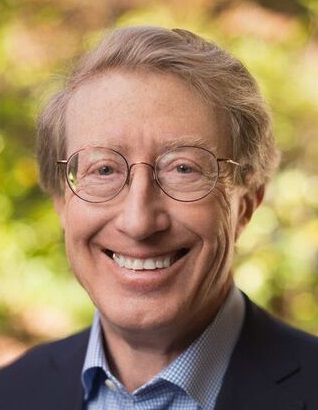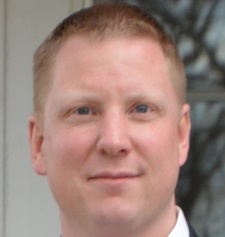Bloomberg News: Harvard’s Investment Chief Says 8.1% Return Signals ‘Deep Structural Problems’
by charles | Comments are closed09/26/2017
9-19-17 Bloomberg News: Harvard’s Investment Chief Says 8.1% Return Signals ‘Deep Structural Problems’
Read More »Harvard Crimson: Strong Public Markets May Bode Well for Harvard
by charles | Comments are closed09/26/2017
9-18-17 Harvard Crimson: Strong Public Markets May Bode Well for Harvard
http://www.thecrimson.com/article/2017/9/18/peer-institutions-post-results/
Read More »OCIO assets up over 21% in Skorina’s latest OCIO list!
by charles | Comments are closed09/20/2017
With 77 firms heard from, we’re now reporting $1.7 Trillion in full-discretion assets under management by outsourced chief investment officer firms.
That’s a year-over-year jump of $364 billion – or a little over twenty one percent – since September, 2016!
See last year’s report, here: https://www.charlesskorina.com/?p=3916
The number of reported RFPs is also rising as institutions seek better returns and broader investment options. OCIO providers, in turn, are beefing up their resources to meet the needs of current and prospective clients.
For example: Alan Biller, Hirtle Callaghan, Goldman Sachs, and Cambridge Associates, among others, all continue to add headcount and expand capabilities.
Hirtle Callaghan is hiring senior client-centric investment professionals, Goldman and Cambridge continue to mobilize and deploy their deep internal resources, and Alan Biller continues to build for the future and consolidate their commanding position in the multi-employer pension space.
Where are CIOs to come from?
As a search-committee chairman remarked to me recently, there are very few Joe Montanas to be had among nonprofit CIOs. The accomplished stars and no-brainer candidates are mostly immovable.
That’s obviously true among the mega-endowments. Seth Alexander, Andrew Golden, and Scott Malpass are happy where they are. Recent hires like Narv Narvekar and Britt Harris were well-known to Harvard and UTIMCO, respectively, for years. And in each case that is probably the only move either would have considered.
But much the same problem exists at smaller funds. Proven leaders are already well-paid; and/or they’re closer to the end than the beginning of their careers.
Paula Volent, for instance, has done a stellar job at the $1.3 billion AUM Bowdoin College endowment, and is still relatively young. But her board is – wisely – taking very good care of her. It’s unlikely that another fund that size could match what’s she’s making.
See: https://bowdoinorient.com/2017/09/15/volents-pay-jumps-930k/
Talent is still available at a reasonable price, lots of it. But you have to look deeper and harder, and may need to move down to next-generation leaders who don’t have the long track-records that reassure nervous, picky boards. Next-gen candidates bring less hands-on experience and must survive harder scrutiny.
Big Fortune 500 firms like GE spend years and millions of dollars training their leaders for top jobs. Nonprofits don’t have the time or budget for that.
New CIOs must show up full-fledged ready to hit the ground running.
OCIO firms can offer the proven performance of those unobtainable super-stars at a reasonable price. And they can replicate the entire investment office with the process and structure to cope with the complexity of modern portfolios and mounting operational and regulatory burdens.
An OCIO isn’t necessarily the best choice for your institution, but it’s an attractive proposition for many. That’s why their AUM is still growing at that blistering pace.
Stay tuned for Part 2:
In our next newsletter, we will have more to say about the pros and cons of outsourcing, plus an extended analysis of endowment investment management costs, and conversations with some prominent outsourcing leaders.
For now, let’s just look at how the sector is doing and who’s available to take your call per our latest research.
On to the 2017 edition of Skorina’s Ultimate Outsourcer List!
Read More »Scott Wilson steps up: Washington U lands a prime Chief Investment Officer
by charles | Comments are closed09/14/2017
Scott Wilson steps up
Washington University lands a prime Chief Investment Officer
Washington University in St. Louis has landed a splendid new chief investment officer for its $8 billion endowment: Scott L. Wilson of Grinnell College.
The hire was announced last week and conducted by WUSL’s interim CIO and search committee chair Eric Upin.
Mr. Upin is a highly qualified CIO in his own right. He’s a Harvard MBA, former CIO of the Stanford endowment and, more recently, a senior partner and CIO at outsourcer Makena. (Check out Makena’s standing in our updated OCIO list, coming next week!)
Mr. Wilson served for more than seven years at the $1.9 billion (FY 17) Grinnell College endowment in Iowa, including three years as CIO. He’s a Grinnell grad, and was working toward an MS in financial mathematics from the University of Chicago when he was transferred to Tokyo.
Before joining Grinnell he held a series of hands-on bond- and derivatives-trading jobs, including a long tour in Tokyo working for Bank of America and Barclay’s Capital. And every summer he likes to get away from it all by retreating to his cabin somewhere up a mountain side in a remote part of Alaska.
He arrives in St. Louis with the global perspective needed at a major endowment in this era. We know, for instance, that he has been shifting equity money into ex-U.S. markets since 2014, including establishing a foothold in sub-Saharan Africa (through private-equity deals), where many have feared to tread.
Kim Walker departed St. Louis in December after a 10-year tour as founding CIO at the WU Investment Management Company. She had no announced destination, and hasn’t yet surfaced anywhere else.
For Mr. Wilson, who’s still only 41, this is a big step up. He’s moving from the 63rd-largest to the 16th-largest endowment per our latest SEER rankings. And he will undoubtedly see a commensurate jump in pay.
Our SEER numbers show Mr. Wilson with total comp of $562,117 in 2014, the latest period available. Ms. Walker got $891,871 in the same period (which is a bit on the low side for a Top 20 endowment). We would expect him to get a package totaling close to $2 million as he comes aboard this Fall.
See SEER pay rankings: https://www.charlesskorina.com/?p=4922
Five-year annualized performance for the two funds has been similar: 5.4 percent at Grinnell and 5.6 percent at WUSL. But their allocations have been significantly different.
See SEER performance rankings: https://www.charlesskorina.com/?p=4828
Grinnell is heavier in equities than most big endowments, including WUSL. That equity exposure worked for them in FY2015, when Grinnell returned a big 20.4 percent, ahead of all the Ivys, and tied with University of Minnesota for the best performance among Top 100 endowments. Mr. Wilson has been lightening that equities bucket over the last two years, shifting more into alternatives, but it still stands at about 40 percent as of FY2016.
Mr. Wilson has also eschewed macro hedge funds at Grinnell, because it creates portfolio construction issues which make it very difficult for the investment office to return its cost of capital. This may or may not be reflected in the WUSL allocations going forward.
Like most big endowments, both WUSL and Grinnell posted losses in FY2016, but Grinnell has come roaring back in FY 2017 with a return close to 19%, bringing their five-year return to an impressive 10%. As we see from their target allocation below, Grinnell has been high in equities when it counted and low in real assets when the pickings were slim.
Read More »Scott Wilson, from Grinnell to Washington U
by charles | Comments are closed09/13/2017
Scott Wilson, from Grinnell to Wash U
Washington University, St Louis lands a prime Chief Investment Officer
See: https://www.charlesskorina.com/?p=5094
Read More »

